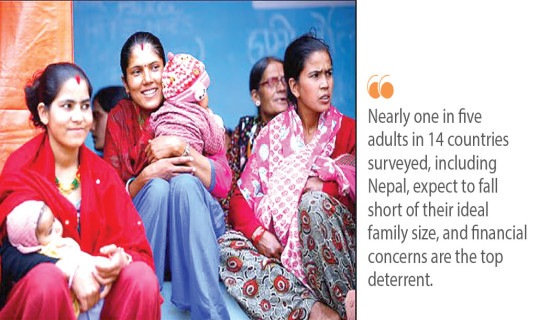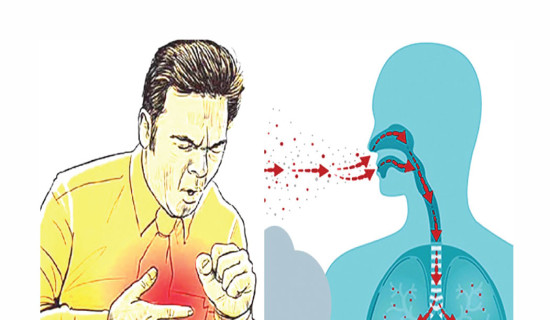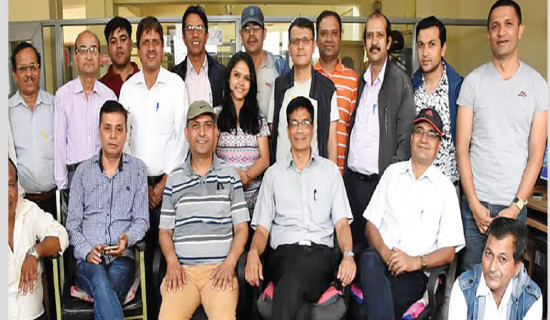- Wednesday, 17 December 2025
Nepal making progress in maternal care, child mortality
Kathmandu, Dec. 4: With constant effort of the government to promote Maternal and Neonatal Health (MNH), progress has been made in maternal care but there is no significant change in neonatal deaths.
Nepal’s target for Sustainable Development Goals (SDGs) is to reduce the number of under-five mortality rate to 27 deaths per 1,000 live births by 2022. As per the Nepal Demographic and Health Survey (NDHS)-2022 report, the child mortality rate has improved in five years, but the target has not been achieved.
Nepal has made commitment to meet the target of SDGs, to reduce the Maternal Mortality Rate to 70 per 100,000 live births and neonatal mortality to 12 per 1,000 live births, and to achieve coverage of 90 per cent for four antenatal care (ANC) visits, institutional delivery, skilled birth attendants (SBA) delivery, and three postnatal (PSN) check-ups
by 2030.
The National Demographic Health Survey (NDHS) 2022, shows that the government has done progressive development in the field of health sectors over the years.
Though various indicators are positive towards meeting the target of the SDGs, neonatal care, vaccination, and adolescent health still need more investment and attention, according to Dr. Bibek Kumar Lal, Director at Family Welfare Division (FWD) under
the MoHP.
The government is likely to meet the target if the indicators improve at the same pace. It has made significant progress in child nutrition and there is improvement in maternal care and institutional birth, said Dr. Lal.
Child mortality drops, neonatal death doesn’t
According to the NDHS, between the 1996 and the 2022 NDHS surveys, under-5 mortality declined from 118 to 33 deaths per 1,000 live births, infant mortality declined from 78 to 28 deaths per 1,000 live births, and neonatal mortality declined from 50 to 21 deaths per 1,000 live births. Notably, however, between the 2016 and 2022 NDHS, the neonatal mortality did not change.
According to the NDHS 2022 report, 33 children die per 1,000 live births in Nepal. Earlier in 2016, 39 children died per 1,000 live births in Nepal.
There has been no improvement in neonatal mortality. According to the NDHS study, the neonatal mortality rate, which was 21 five years ago, is still 21.
According to Dr. Kritipal Subedi, Senior Consultant Gynecologist and Obstetrician at Paropakar Maternity and Women’s Hospital, most of the neonatal deaths are related to the health complications of mothers.
In order to improve survival of newborns and end preventable stillbirths, it is necessary to provide high quality of antenatal care, skilled care at birth, postnatal care for mother and baby, and care of preterm baby and sick newborns, added Dr. Subedi.
Though delivery services are free, neonatal care cost high, due to which most parents are found reluctant to provide treatment for ill newborns.
A large proportion of neonatal deaths occur during the first 48 hours after delivery. So, prompt postnatal care for the child is important to treat any complications arising from the delivery.
Progress in maternal care
Maternal care is the significant indicator to reduce maternal mortality. The NDHS 2022, shows that there has been progress in maternal care. The percentage of women who received antenatal care from skilled service providers for their most recent live birth in the two years preceding the survey increased from 25 per cent in 1996 to 94 per cent in 2022.
Similarly, those who made four or more ANC visits increased from 9 per cent in 1996 to 81 per cent in 2022. The percentage of live births that are assisted by a skilled provider has increased markedly, from 10 per cent in 1996 to 80 per cent in 2022.
The progress is very impressive in terms of maternal care; however, the concerned authorities must analyze why the indicators are still in slow pace in Tarai region, said Dr. Laxmi Tamang, a public health expert and former President of Midwifery Society Nepal.
According to the NDHS, 94 per cent of women reported receiving antenatal care from a skilled service provider for their most recent live birth or stillbirth in the 2-year period preceding the survey.
Four in five women, which is equivalent to 80 per cent, had at least four ANC visits for their most recent live birth. Overall, 96 per cent of women took iron-containing supplements during their most recent pregnancy, 93 per cent of women with a live birth in the two years preceding the survey received sufficient doses of tetanus toxoid injections to protect their baby against neonatal tetanus and 79 per cent of live births and still births in the two years preceding the survey were delivered in health facilities.
Overall, 70 per cent of women with a live birth or stillbirth in the two years preceding the survey received a postnatal check within two days after delivery. These indicators for reducing maternal mortality have shown greater progress, said Dr. Tamang and added that government should invest more in postnatal check-up.
“If the government makes progress at the same pace, it may definitely meet the target of SDG,” she added.
Vaccination coverage
As per the NDHS report, around 4 per cent of children were found to be out of reach of vaccination in the last five years. It has been found that children are deprived of vaccinations that should be administered within 12 to 23 months.
“We are backward in already gained target, as immunization rate among those children below 12-23 months, who did not receive any doses, has significantly increased to 4 per cent, which was only 1 per cent in 2016,” said Dr. Lal.
The number of children who were not vaccinated was 1 per cent in 2001, 3 per cent in 2006, and 3 per cent in 2011. In addition, the number of fully immunized children has increased by 2 per cent to 80 per cent in the last five years. This number was 78 per cent in 2016, 87 per cent in 2011, 83 per cent in 2006, and 66 per cent in 2001.
According to our assessment, vaccine coverage declined because of the COVID-19 pandemic, said Dr. Lal.
Child nutrition status
Nepal has made significant progress in child nutrition, according to the NDHS report. The prevalence of height-for-age (stunting) has declined from 57 per cent in 1996 to 25 per
cent in 2022.
During the same period, the prevalence of weight-for-height (wasting) declined from 15 per cent to 8 per cent and the prevalence of weight-for-height (overweight) was steady at 1 per cent.
According to the three anthropometric indices: 25 per cent of children under age 5 are stunted, 8 per cent are wasted, and 19 per cent are underweight and 1 per cent of children under 5 are overweight.
Similarly, anemia is a major concern among pregnant women as it leads to increased maternal mortality and poor birth outcomes. According to the NDHS 2022, around 34 per cent of women are anemic including 18 per cent mildly anemic, 15 per cent moderately anemic and 1 per cent severely anemic.
The prevalence of anemia among women aged 14-49 increased from 36 per cent in 2006 to 41 per cent in 2016 and declined to 34 per cent in 2022.
















